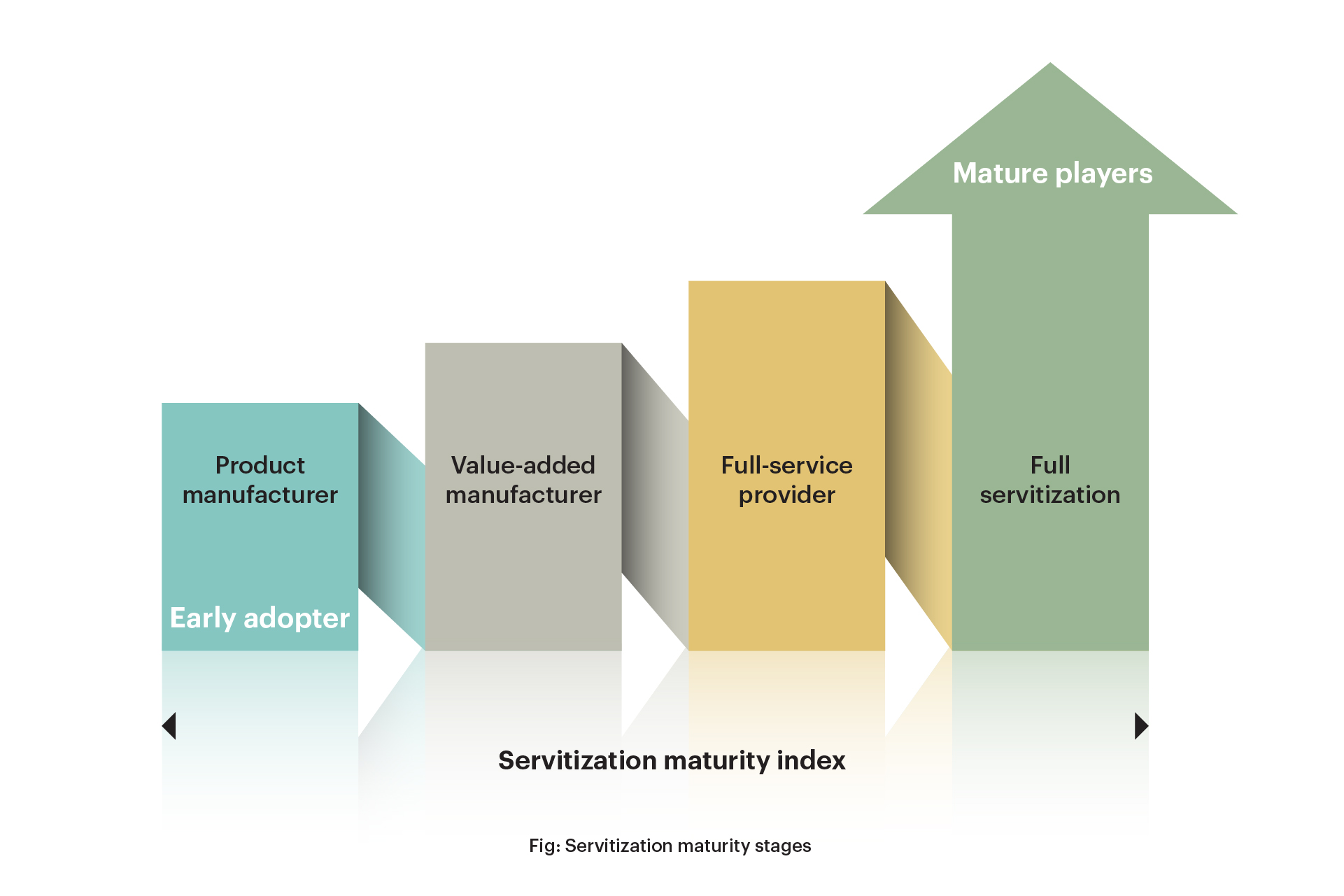
Winning through a holistic approach to servitization
Over 50 percent of Fortune 500 companies and 70 percent of the largest 100 UK firms have become extinct in the last two decades. Compared to 1955, the average life expectancy of an enterprise has decreased from 55 years to 15 years in 2021. Companies must constantly reinvent themselves to survive fast-changing consumer buying behavior. Servitization — the shift from traditional business models to an outcome-based, product-as-a-service (PaaS) model — promises to provide the competitive advantage companies seek to stay ahead of the curve.
As a concept, servitization is nothing new. Rolls Royce pioneered the idea of product-as-a-service in 1962 when it offered power-by-the-hour for jet engine maintenance management. In 2015, Philips introduced light-as-a-service (LaaS) as an offering, allowing customers to pay for the light they use and leave equipment and maintenance costs to the manufacturer.
Making the shift
An IDC forecast suggests that by 2025 about 79.4 zettabytes of data will be generated from approximately 41.6 billion Internet of Things (IoT) devices. This massive data surge is fueling the shift to servitization. Gone are the days of one-off product sales transactions. Today, it is vital for enterprises to provide tangible benefits at every stage of the value chain. This approach requires companies to change their mindset and rethink their operations, financials, revenue models, and even their sales and post-sales services approach. According to a McKinsey report, compared to new product sales margins of approximately 10 percent, aftermarket service margins average 25 percent, which means companies need to invest in their analytical capabilities and scalable IT infrastructure to create a winning ecosystem.
Servitization is increasingly being adopted in the B2B industrial space, with more and more organizations connecting products and services and employing a wise pivot from a product economy to a service economy, enabling better efficiency along the entire value chain. For instance, GE’s TruPay offering uses a pay-per-use model to provide 360-degree care for specific medical equipment, built-in performance commitments, complete care, and 24/7 online remote services. The cost is determined by the outcomes delivered. We believe that adopting and accelerating servitization can drive 15-20 percent annual growth in services income and contribute significantly to the overall revenue.
Need for the right strategy
Most companies understand the benefits of servitization but face challenges in defining the right strategy. This holds true, especially in large-scale integrations of the servitization business model into product and service portfolio and performance management. To succeed, companies must embed a robust framework to pivot to the anything-as-a-service (XaaS) model and service-based economy.
Zensar’s battle-tested approach to transformation — rationalize, transform, and succeed — enables organizations to overcome the challenges and inertia by laying down a simple framework for success.
Rationalize
Discovering and designing a robust digital roadmap for planning and executing large-scale transformation should be the first step for companies embarking on servitization. This is especially critical as every dollar of digital investment needs a sound justification to achieve the desired business outcomes.
Our maturity assessment framework highlighted below is designed to help companies recognize their maturity level in their servitization journey.

Transform
Consumer need sustainable, reliable, and customizable products. With changing consumer behavior, organizations need to rethink service models to stay ahead of the competition. Companies can unlock business excellence by transforming their digital applications and infrastructure using cutting-edge platforms. The key here is to break silos and adopt an integrated approach that caters to all the business layers, from customer experience to advanced engineering, data analytics, and underlying digital cloud-based applications and infrastructure.
Succeed
In the emerging world of servitization, value creation and delivery are ongoing processes. Therefore, giving equal importance to managing and accelerating operational excellence is critical. The focus should be on continuously monitoring, automating, optimizing, and securing operations by deriving insights from the data through multiple channels.
The transformation journey described above is a holistic approach that enables organizations to improve product reliability, deliver superior value, and develop new revenue-generating models. Technology drivers such as hybrid cloud, IoT, additive manufacturing, and immersive tech that can embed services in B2B products are now available to be harnessed and propel growth. No company should wait to reap the benefits of this profitable business proposition, forge longstanding customer relationships, and create a sustainable competitive advantage.